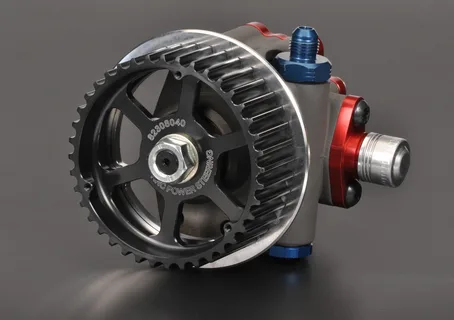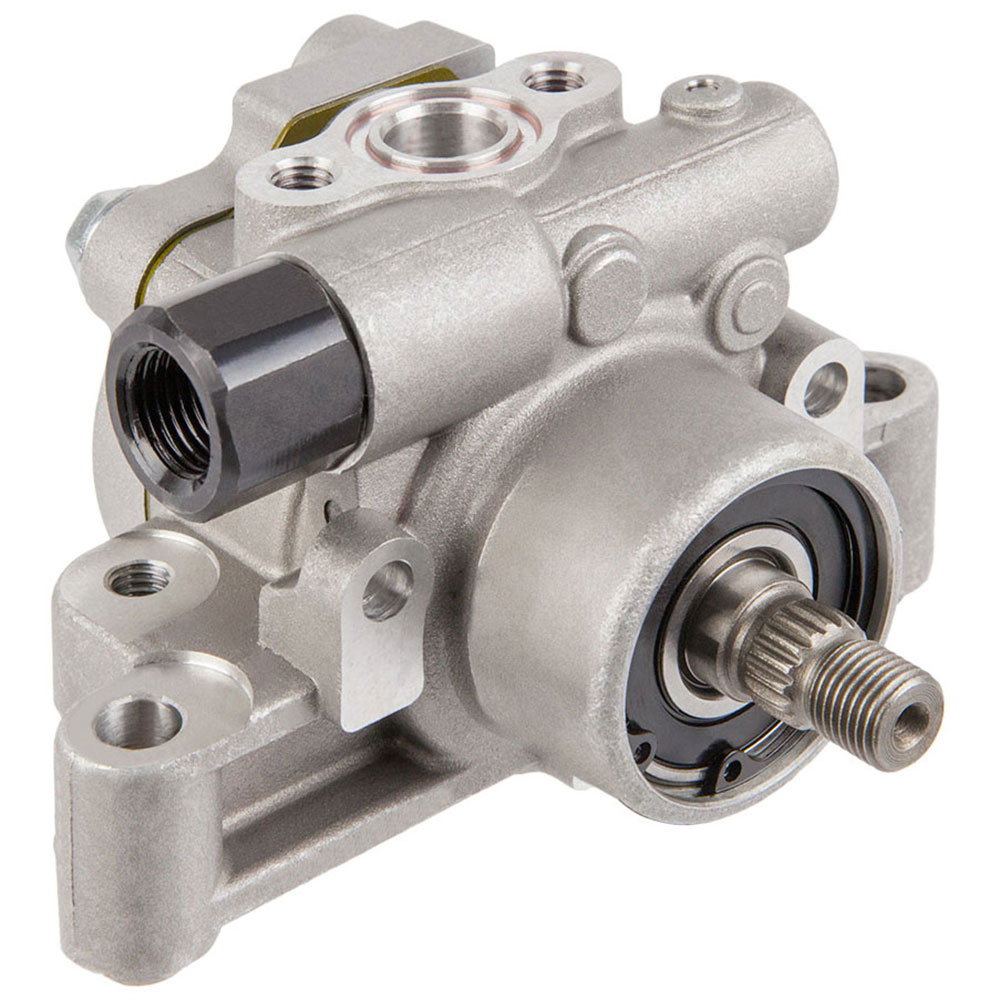Are you the proud owner of a vehicle with a 5.7L Power Steering Pump? Then you know just how important this component is for a smooth and effortless driving experience. This powerful pump plays a crucial role in ensuring your steering system works efficiently, allowing you to easily maneuver your vehicle on the road. However, like any other mechanical part, the Power Steering Pump requires proper maintenance to continue functioning at its best. In this ultimate guide, we will dive into everything you need to know about maintaining your Power Steering Pump and keeping your driving experience top-notch.
Understanding the Role of the power steering pump vz commodore
The power steering pump vz commodore plays a vital role in ensuring smooth and effortless steering. Without it, you would find it difficult to turn your vehicle and navigate the roads with ease.
The power steering pump is responsible for generating the hydraulic pressure needed to assist in turning the wheels. It is driven by the engine through a belt, which spins the pump’s rotor. As the rotor turns, it creates pressure in the power steering fluid, which is then transmitted to the steering gear.
This hydraulic pressure makes it much easier to steer your Commodore, especially at low speeds or when making tight turns. Without the power steering pump, you would have to exert a significant amount of force on the steering wheel to maneuver your vehicle, making the driving experience much more challenging and tiring.
It’s important to understand the role of the power steering pump so that you can appreciate its importance in maintaining the performance and functionality of your Holden Commodore VZ. With proper maintenance and care, you can ensure that your power steering pump continues to work efficiently, providing you with a smooth and effortless driving experience for years to come.
Identifying Signs of a Failing Holden Commodore VE V8 Power Steering Pump
Is your Holden Commodore VE V8 experiencing steering issues? It could be a sign that your Holden Commodore VE V8 power steering pump is failing. Recognizing these signs early on can save you from potential accidents and costly repairs.
One of the most common signs is difficulty in steering. If you find it harder to turn the steering wheel or experience resistance, it could indicate a problem with the power steering pump. You may also notice strange noises coming from the pump, such as whining or groaning sounds. These noises typically occur when the pump is working harder than usual.
Another red flag is leaking power steering fluid. Check the area around the pump and the hoses for any signs of fluid leakage. Low fluid levels can cause a loss of power assistance, making steering more challenging.
Additionally, pay attention to vibrations in the steering wheel or inconsistent steering response. If you notice any of these signs, it’s crucial to have your power steering pump inspected by a professional mechanic. They can diagnose the issue and recommend the necessary repairs or replacements.
By being vigilant and proactive in identifying these signs, you can address power steering pump problems early on, ensuring your Holden Commodore V8 continues to provide a smooth and effortless driving experience.

Essential Maintenance Tips for Your Holden VE Commodore Power Steering Pump
Proper maintenance is essential for ensuring the longevity and optimal performance of your Holden VE Commodore power steering pump. Here are some essential maintenance tips to keep your power steering pump in top shape:
Regularly check the power steering fluid levels: The power steering pump relies on an adequate amount of fluid to operate effectively. Check the fluid levels regularly and top up as needed using the manufacturer-recommended fluid.
Inspect for leaks: Leaking power steering fluid can indicate a problem with your power steering pump or the hoses. Regularly inspect the area around the pump and the hoses for any signs of fluid leakage. If you notice any leaks, have them repaired immediately to prevent further damage to the pump.
Keep the belt tension in check: The power steering pump is driven by a belt connected to the engine. Make sure the belt tension is correct to ensure proper power transmission. If the belt is loose or damaged, it can affect the performance of the power steering pump.
Flush and replace the power steering fluid: Over time, power steering fluid can accumulate dirt and debris, which can affect the performance of the pump. Regularly flush and replace the power steering fluid according to the manufacturer’s recommendations.
Pay attention to unusual noises: If you hear any unusual noises coming from the power steering pump, such as whining or groaning sounds, it could indicate a problem. Have it inspected by a professional to diagnose and address any issues promptly.
By following these essential maintenance tips, you can keep your Holden Commodore power steering pump in optimal condition, ensuring a smooth and effortless driving experience for years to come.
How to Troubleshoot Common Power Steering Pump Problems?
Dealing with power steering pump problems can be frustrating, but don’t worry! In this section, we will provide you with some helpful tips on troubleshooting common issues with your power steering pump.
One common problem you may encounter is a loss of power assistance. If your steering feels heavy or stiff, it could indicate a problem with the pump. Start by checking the power steering fluid levels. Low fluid levels can lead to a loss of pressure and make steering more difficult. If the fluid is low, top it up according to the manufacturer’s recommendations.
Another issue you might face is strange noises coming from the power steering pump. Whining or groaning sounds usually indicate a problem with the pump’s bearings or a lack of fluid. If you hear these noises, have your pump inspected by a professional mechanic.
Leaks are another common problem with power steering pumps. Inspect the area around the pump and the hoses for any signs of fluid leakage. Leaking fluid can cause a loss of power assistance and potentially damage the pump. If you find any leaks, have them repaired as soon as possible.
If you’re experiencing steering vibrations or inconsistent steering response, it could be a sign of a failing power steering pump. In this case, it’s best to have a professional mechanic inspect the pump and diagnose the issue.
By troubleshooting these common power steering pump problems, you can save yourself from potential accidents and expensive repairs. Stay vigilant and address any issues promptly to ensure your power steering pump continues to perform at its best.
Maximizing the Lifespan of Your Power Steering Pump
To maximize the lifespan of your power steering pump and ensure it continues to operate efficiently, there are several key steps you can take. First and foremost, regular maintenance is crucial. This includes checking and maintaining proper power steering fluid levels, as well as regularly inspecting for any leaks or signs of damage.
In addition to regular maintenance, it’s important to avoid putting excessive strain on your power steering pump. This means being mindful of how you drive and avoiding excessive force or harsh steering maneuvers. Steering gently and smoothly can help prevent unnecessary wear and tear on the pump.
Another way to extend the lifespan of your power steering pump is by regularly flushing and replacing the power steering fluid. Over time, the fluid can become contaminated with dirt and debris, which can affect the pump’s performance. By flushing and replacing the fluid according to the manufacturer’s recommendations, you can help ensure that your pump remains in optimal condition.
Finally, it’s important to address any issues or concerns promptly. If you notice any unusual noises, vibrations, or difficulties with steering, have your power steering pump inspected by a professional mechanic. Addressing these issues early on can help prevent further damage and extend the lifespan of your power steering pump.
By following these tips and staying proactive with maintenance and repairs, you can maximize the lifespan of your power steering pump and enjoy a smooth and effortless driving experience for years to come.
Optimizing Your Power Steering Pump’s Performance
Now that you have learned about the role of the power steering pump, identified signs of a failing pump, and discovered essential maintenance tips, it’s time to optimize the performance of your power steering pump. By following these steps, you can ensure that your pump operates at its best and provides you with a smooth and effortless driving experience.
Firstly, make sure to regularly check and maintain proper power steering fluid levels. This is crucial for the pump’s functionality. Low fluid levels can lead to a loss of pressure and make steering more challenging. Additionally, be sure to flush and replace the power steering fluid according to the manufacturer’s recommendations. Over time, the fluid can accumulate dirt and debris, affecting the pump’s performance.
Secondly, pay attention to your driving habits. Avoid putting excessive strain on your power steering pump by steering gently and smoothly. Harsh maneuvers and excessive force can lead to unnecessary wear and tear on the pump.
Lastly, address any issues or concerns promptly. If you notice unusual noises, vibrations, or difficulties with steering, have your power steering pump inspected by a professional mechanic. By addressing problems early on, you can prevent further damage and optimize the performance of your power steering pump.
By implementing these steps and staying proactive with maintenance, you can ensure that your power steering pump performs at its peak and provides you with a truly enjoyable driving experience.
FAQS
Have some burning questions about your Power Steering Pump? Don’t worry, we’ve got you covered with this FAQ section!
Q: How often should I check the power steering fluid levels?
A: It is recommended to check the power steering fluid levels at least once a month. This will help ensure that your pump has an adequate amount of fluid to operate efficiently.
Q: Can I use any type of power steering fluid for my Power Steering Pump?
A: No, it is crucial to use the manufacturer-recommended power steering fluid for your specific pump. Using the wrong fluid can lead to damage and affect the performance of the pump.
Q: How do I know if my power steering pump needs to be replaced?
A: If you are experiencing significant issues with steering, such as excessive noise, difficulty turning the wheel, or consistent fluid leaks, it may be time to replace your power steering pump. We recommend consulting with a professional mechanic to accurately diagnose and address the problem.
Q: Can I drive my vehicle if the power steering pump is failing?
A: It is not recommended to drive your vehicle if the power steering pump is failing. A failing pump can significantly impact your ability to steer properly, increasing the risk of accidents. It’s best to have it inspected and repaired as soon as possible.
Q: How long can a power steering pump typically last?
A: The lifespan of a power steering pump can vary depending on factors such as driving habits, maintenance, and overall vehicle condition. However, with proper care and maintenance, a power steering pump can last anywhere from 100,000 to 150,000 miles.
Conclusion
In conclusion, maintaining your Power Steering Pump is essential for ensuring a smooth and effortless driving experience. By understanding the role of the power steering pump in your Holden Commodore VZ, you can appreciate its importance and take the necessary steps to keep it in optimal condition. Identifying signs of a failing power steering pump, such as difficulty in steering, strange noises, and fluid leakage, is crucial for prompt repairs and preventing further damage. Regular maintenance, including checking fluid levels, inspecting for leaks, and keeping the belt tension in check, will help extend the lifespan of your power steering pump.



